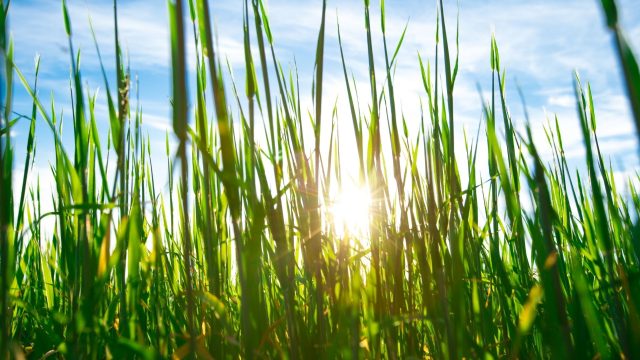02
May
No Mow May—Support Organic Habitat

(Beyond Pesticides, May 2, 2022) Lawns occupy 40 million acres, or 2% of the land in the U.S. Their maintenance typically involves pesticides and fertilizers that kill pollinators and soil life and wash into streams, where they do more damage. Lawn maintenance also involves a lot of mowing. While mowing is an effective way to encourage grasses over most broadleaved plants, it also has broader ecological impacts.
The 3,600 species of bees in the U.S. and Canada range from large bumblebees to tiny sweat bees. There are many things you can do in your yard and community to protect these bees—starting with managing lawns and landscapes organically and planting flowers favored by bees and other pollinators. This one—No Mow May—requires less work.
No Mow May began with research by Plantlife in the UK and was taken up by property owners in Appleton, WI, who demonstrated that “homes that participated in No Mow May had more diverse and abundant flora than regularly mowed green spaces throughout the city.”
May is the month when many bees emerge from hibernation throughout the U.S. and seek sources of pollen and nectar. By allowing your lawn to grow during May, more flowering plants will bloom, feeding the bees and other pollinators. The longer grass also provides a more diversified habitat for ground beetles and some butterflies. Mowing may still be advisable if ticks are a problem (mow paths!) or ground-nesting bees are present.
One obstacle that many people face in taking a break from mowing is that some communities have weed ordinances that prohibit tall vegetation. After years of fines for allowing his grass on his Prairie Street lot to grow, Michael Almon of Lawrence, KS collaborated with the Lawrence Sustainability Advisory Board in drafting a new natural landscaping ordinance to replace the old weed ordinance. See Beyond Pesticides’ Tools for Change for help in changing your city’s outdated ordinance.
Letter to mayors:
Lawns occupy 40 million acres, or 2% of the land in the U.S. Their maintenance typically involves pesticides and fertilizers that kill pollinators and soil life and wash into streams, where they do more damage. Lawn maintenance also involves a lot of mowing. While mowing is an effective way to encourage grasses over most broadleaved plants, it also has broader ecological impacts.
The 3,600 species of bees in the U.S. and Canada range from large bumblebees to tiny sweat bees. There are many things we can do in our yard community to protect these bees—starting with managing lawns and landscapes organically and planting flowers favored by bees and other pollinators. But one—No Mow May—requires less work.
No Mow May began with research by Plantlife in the UK and was taken up by property owners in Appleton, WI, who demonstrated that “homes that participated in No Mow May had more diverse and abundant flora than regularly mowed green spaces throughout the city.”
May is the month when many bees emerge from hibernation throughout the U.S. and seek sources of pollen and nectar. By allowing our lawns to grow during May, more flowering plants will bloom, feeding the bees and other pollinators. The longer grass also provides a more diversified habitat for ground beetles and some butterflies. Mowing may still be advisable if ticks are a problem (mow paths!) or ground-nesting bees are present.
One obstacle that many people face in taking a break from mowing is that some communities have weed ordinances that prohibit tall vegetation. Fortunately, many communities are taking a more enlightened approach now. Please let me know whether our city promotes pollinator habitat.
Thank you.










